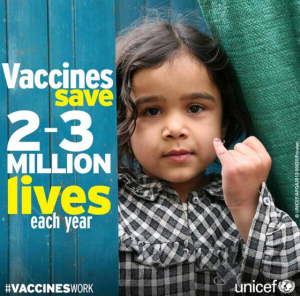A new study has found that people find simple, fact-based vaccination messages most convincing.
 Most people receive the vaccines recommended by health authorities and their doctor – but reminders are often required. The question is how best to encourage people to be vaccinated.
Most people receive the vaccines recommended by health authorities and their doctor – but reminders are often required. The question is how best to encourage people to be vaccinated.
Scientists have collected mountains of data showing that vaccines work and that they are very safe. However, not all health promotion campaigns are based on evidence-based communication strategies.
Researchers in the UK decided to test some of the messages used to promote flu vaccination during the 2009/2010 influenza pandemic. They sat down with 41 people in four focus groups and discussed several approaches to increasing immunisation rates.
Although the sample may be relatively small, the team reached some clear conclusions:
- Risk-reducing messages were preferred to health-enhancing messages
- Factual, evidence-based vaccination messages were considered most convincing
- Messages weighing costs and benefits of vaccination were well received
- Messages eliciting feelings of anticipated regret were viewed as patronising
The paper, published by Fiona Mowbray and colleagues in the journal Vaccine, notes that flu vaccine uptake was considered to be relatively low across the world during the pandemic.
“Despite extensive research on the predictors of uptake of influenza vaccination, little research has focused on testing the effectiveness of evidence and theory-based messages,” the authors explain.
The authors concluded that vaccination messages “should be kept brief, but convey balanced, evidence-based information, and be transparent in their communication of potential side-effects”.
The general public seem to prefer messages that are factual and emphasise the costs and benefits of vaccination, particularly with regards to vaccine safety, the researchers added.
What people said
Factual messages are appreciated because they don’t feel like a sales pitch or an advertisement. As one participant put it:
‘They don’t feel manipulative. It feels just like you’re being sent information for you to be able to make your own decision.’
There was a degree of scepticism about messages that made ‘health-enhancing’ claims, whereas the idea of ‘risk-reduction’ played much better with participants. This was summed up by a participant in their 30s:
‘The ones that say ‘reduce the risk’ are more convincing than the ones that say ‘prevent’. Everybody’s heard of having the flu jab and still getting ill afterwards, so it’s more convincing.’
Perhaps the most intriguing finding was that attempts to instil fear of regret did not go down well:
‘I think [the statement] is a bit patronising, I don’t want to be told when I’m likely to feel upset about something.’
No regrets?
One caveat on the issue of regret: the study looked at how people feel about messages rather than the impact of the messages. It told us that people dislike what they perceive as a negative, fear-laden advertisement.
But what we don’t know from this study is which ones cause an increase or decrease in vaccine uptake.
The idea that ‘regret aversion’ is a powerful influencer of health behaviour is not new. A couple of years ago we sat down with Dr Nick Sevdalis of Imperial College London. He gave a talk at a Fondation Merieux event in which he explained that human beings are “fundamentally risk averse”.
“We all hate regretting a decision and will try to avoid this where possible. We hate to feel like we’ve made a mistake,” he said.
This can be particularly powerful when making a decision for somebody else, such as children or older relatives.
To be provocative, it could be that we don’t enjoy messages designed to make us avoid regret but that these are the ones that actually work.
What we do matters more than what we say we feel when confronted with an uncomfortable message. For example, smokers don’t appreciate graphic images of cancerous lungs but health promotion experts say images have been more effective than the same idea printed in bold text.
Perhaps a controlled trial that tested various messages before flu season – and then followed up afterwards to see who actually had the vaccine – would be a useful next step?
Read more:
– Vaccine communication: Is fear fair?
– What influences vaccination decisions?
– Debunking vaccine myths: does it work?




